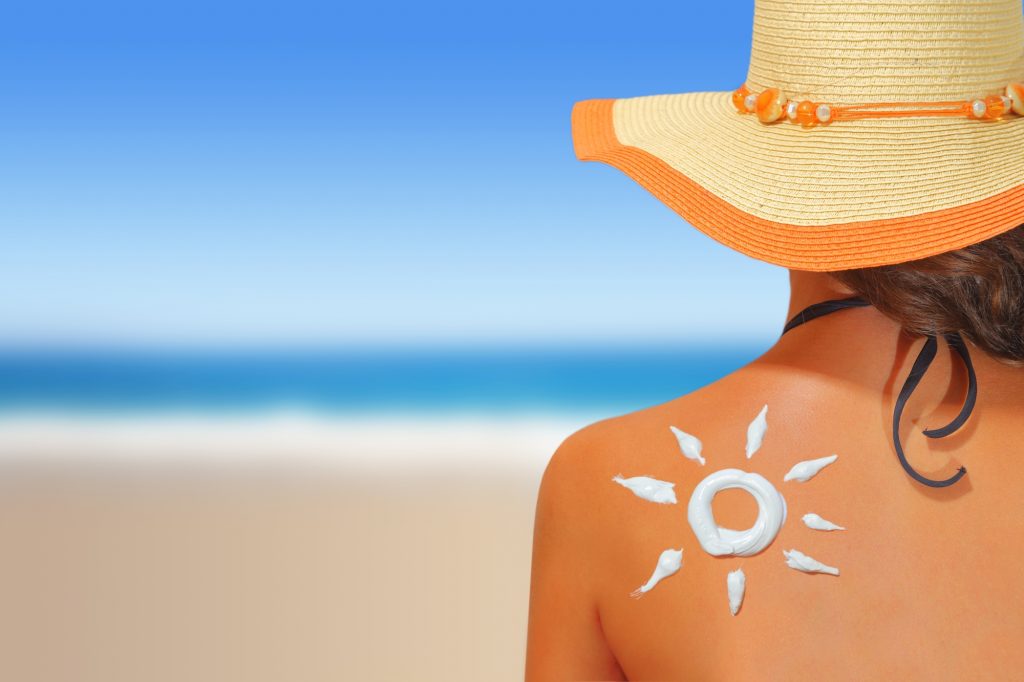
What you eat can be your best medicine, or your worst poison– and that goes for what you “eat” through your skin as well. As we come into the warmer seasons, it is important to make wise choices regarding the sunscreen you choose for yourself and your family. Mass media has instilled fear of the sun, but the sun has many healing properties. It is not the sun that is causing so many skin cancers – it is the toxicity in our body coupled with toxic personal care products, including sunscreen, that people apply to their skin.
Xenoestrogens in Sunscreen
Some sunscreen ingredients have been tested and found to raise the risk of Breast Cancer and other conditions. Many others have not been tested for safety at all. Remember that of the thousands of chemicals within commercial skin care products, only 13% of these have actually been tested for safety!
Methoxycinnate (OMC), Oxybenzone (Bp-3), Benzophenon and Homsalate (HMS)
A 2001 study conducted by Switzerland’s Institute of Toxicology discovered that these man-made chemicals typically found in over-the-counter sunscreens as well as other cosmetics acted like aggressive oestrogens in the body. These xenoestrogens were linked to Breast Cancer tumor growth both in both cell-based and in vivo experiments.
A 2016 investigation conducted as part of the National Health and Nutrition Examination Survey

(NHANES) for 2011–2012 also linked oxybenzone exposure to lower testosterone levels in boys (aged 9-12) and endometriosis in girls. The U.S. Centers for Disease Control’s fourth national report on chemical exposure in humans found that 97% of the people aged 6 and up had oxybenzone in their system.
4-methyl-benzylidene camphor (4-MBC)
Researchers in the Swiss study mentioned above mixed 4-MBC with olive oil. When applied in the same amount that would be in a dose of a common sunscreen, the chemical showed potent xenoestrogenic effects. It appeared to double “the rate of uterine growth well before puberty.”
Padimate O (octyl-dimethyl-PABA or OD-PABA)
Padimate O has been banned in some cosmetics in countries like Japan— and rightly so. The Environmental Working Group states that Padimate O “produces excess reactive oxygen species that can interfere with cellular signaling, cause mutations, [and] lead to cell death…”
One University of Oxford study conducted almost 20 years ago found a 75-fold increase in DNA strand breaks compared to skin that had no sunscreen applied.
(As a side note: a quick PubMed search will bring up over 20,000 studies that link Padimate O to toxicity in some way!)
Legislation Making Headway?
The Sunscreen Protection Act of 2014 was created in response to U.S. Food and Drug Administration (FDA) inaction around sunscreen hazards. It appears that progress on enforcing the Act is finally beginning to kick in.
According to an Arnold & Porter summation, in February 2019 the FDA published “Sunscreen Products for Over-the-Counter Human Use,” which is a set of proposed rules in compliance with the 2014 Act. In addition to updating testing methods, the FDA also proposes including many ingredients as “Category III” chemicals. These include: “cinoxate, dioxybenzone, ensulizole, homosalate, meradimate, octinoxate, octisalate, octocrylene, padimate O, sulisobenzone, oxybenzone, and avobenzone.”
The FDA designates a chemical as Category III when they determine that potential hazards may exist but further studies need to be done before an official government designation can be assigned.
The FDA literature also proposes further addressing sunscreen/insect repellent combo products. This is important since an increasing number of studies have linked sunscreen use to higher absorbency rates for industrial pesticide chemicals, some of which are used in commercial insect repellents. Please see my other blog about commercial insect repellent safety for more information.
Take Control of Your Health This Spring and Summer!
According the FDA report as well as many experts, zinc oxide and titanium dioxide are considered safe to use as sun blocks. They do not absorb into the skin and they can also protect from sun overexposure. That being said, don’t underestimate the healing power of exposing bare skin to just a few minutes of direct sunlight every day—there are some advantages to this that may surprise you! Wear a hat and long sleeves to protect yourself from both sun and bugs if you are outside for longer periods.
Don’t overdo it, play it safe with what you put on yourself and your family and you can have fun and stay safe on your Healthy Breast journey this season!
Dr. Veronique Desaulniers (“Dr. V”) is the founder of Breast Cancer Conqueror.com and The 7 Essentials System ™. This step-by-step guide empowers you with knowledge so you Never Have to Fear Breast Cancer Again! To watch a FREE webinar about the 7 steps for beating breast cancer naturally, Click Here

Is zinc oxide safe with vitiligo and is 10 min in the sun without sunscreen safe For this condition?
Hello Linda! You would want to of course be very careful to determine what your skin can handle. Start with a few minuets per day of sun exposure and work your way up.